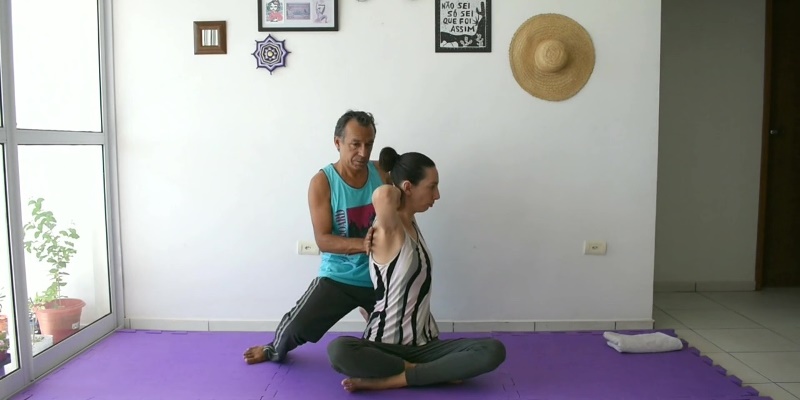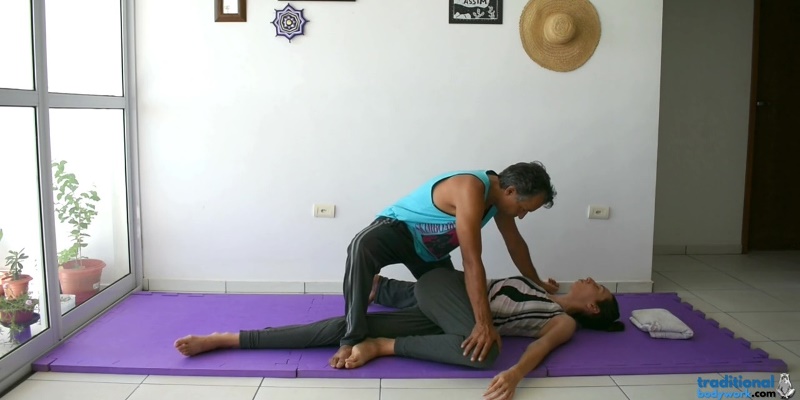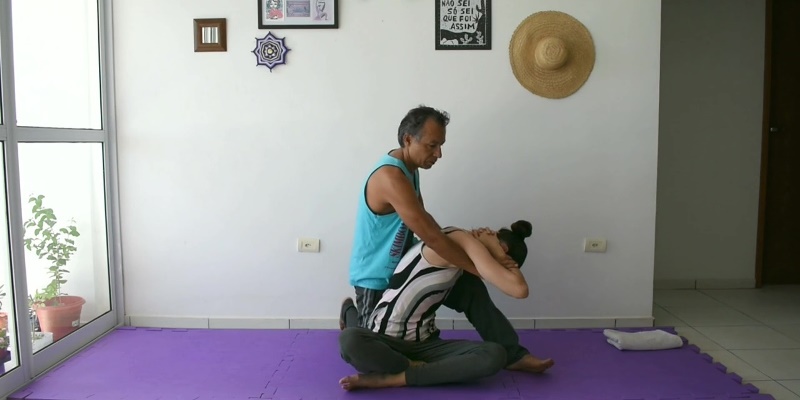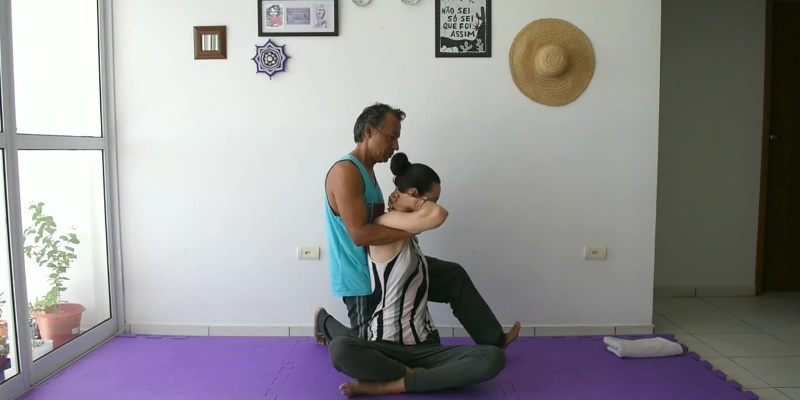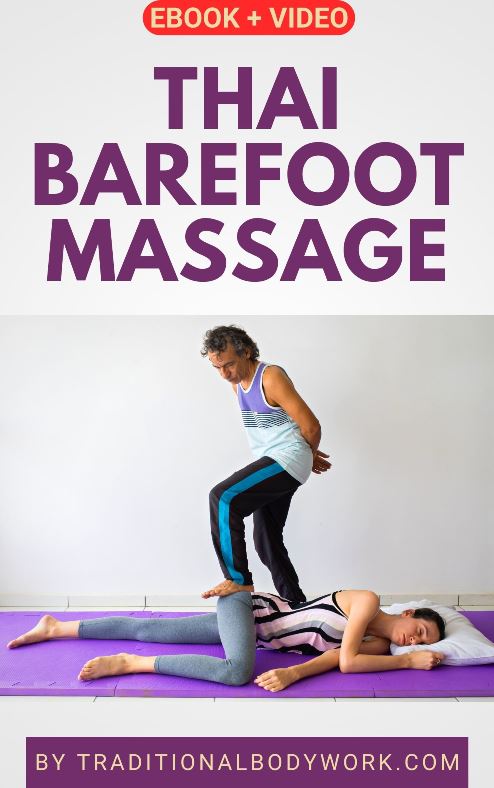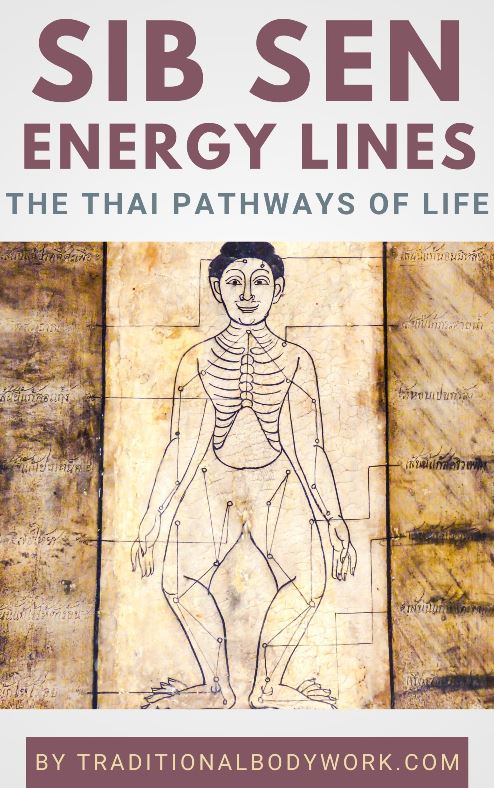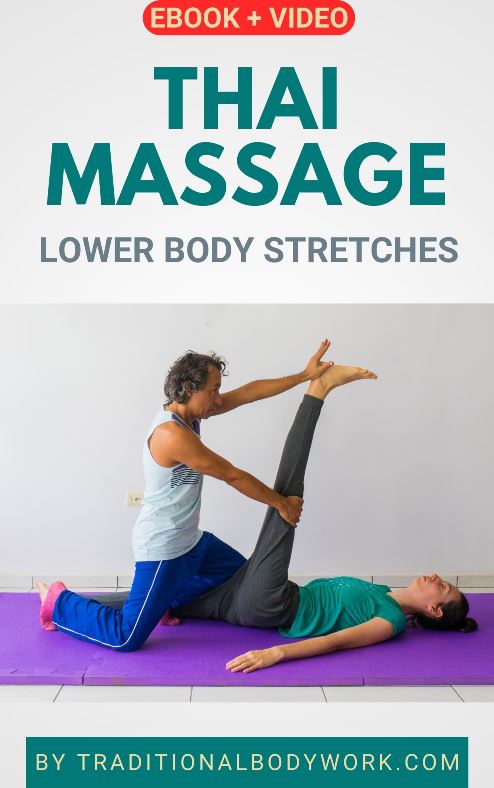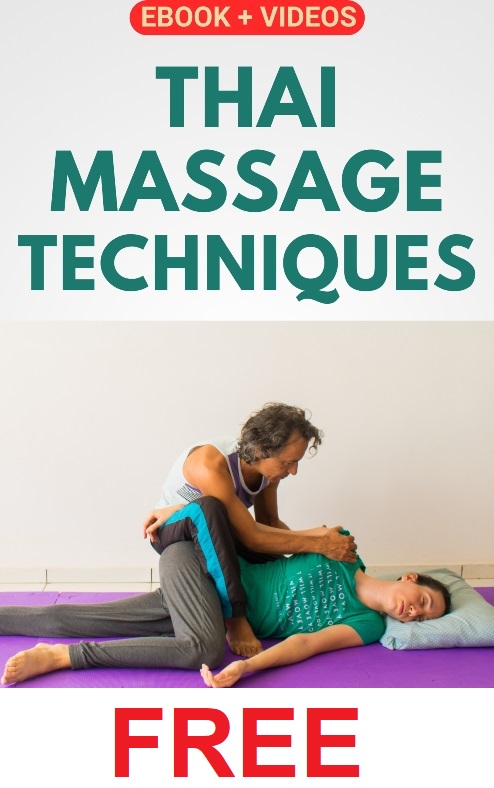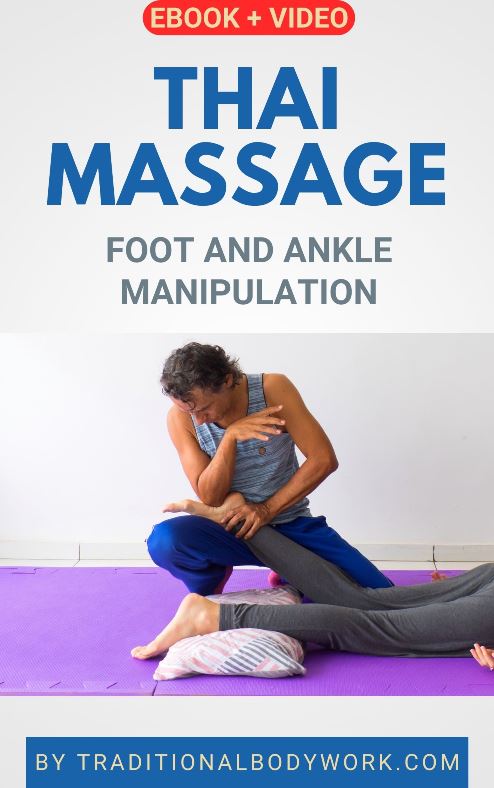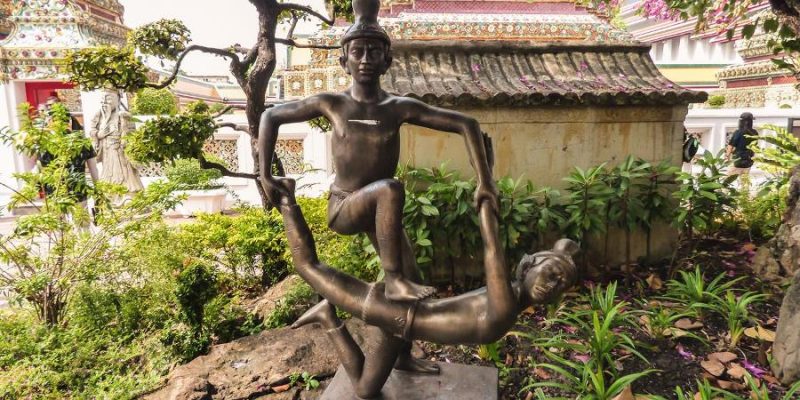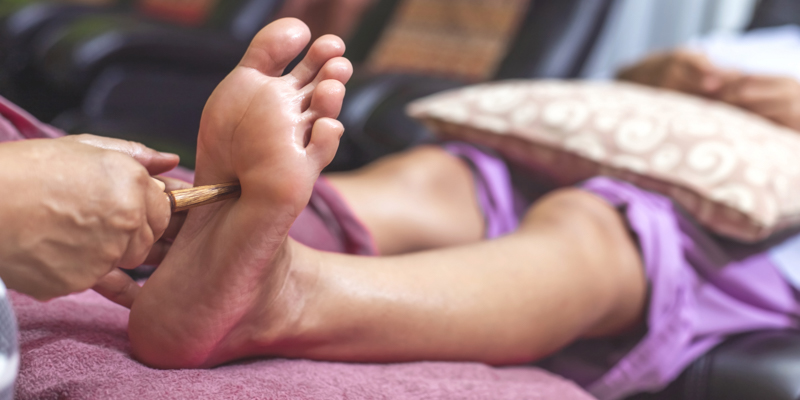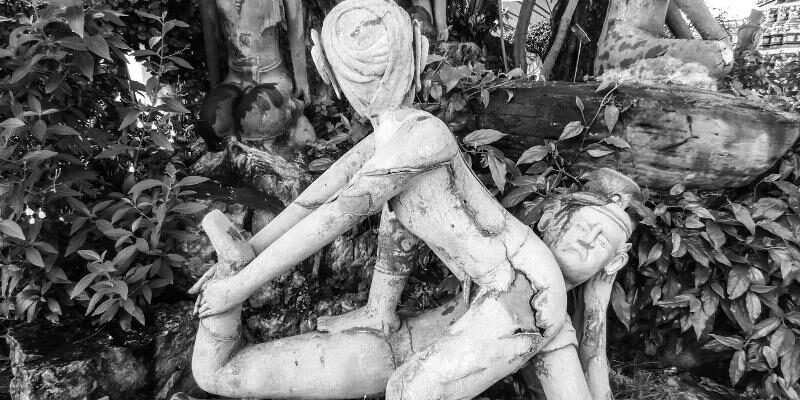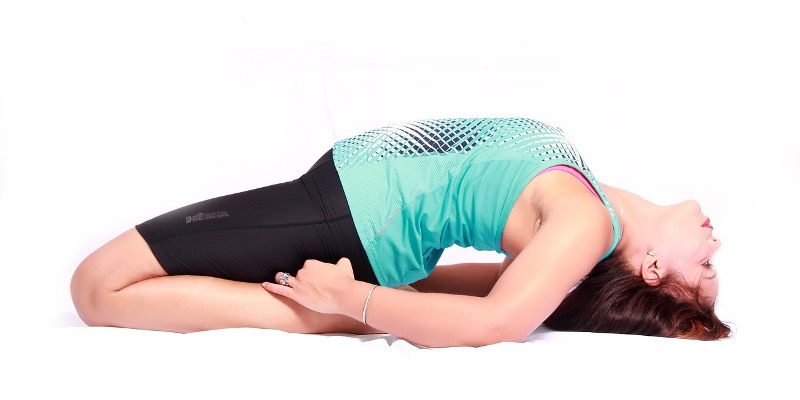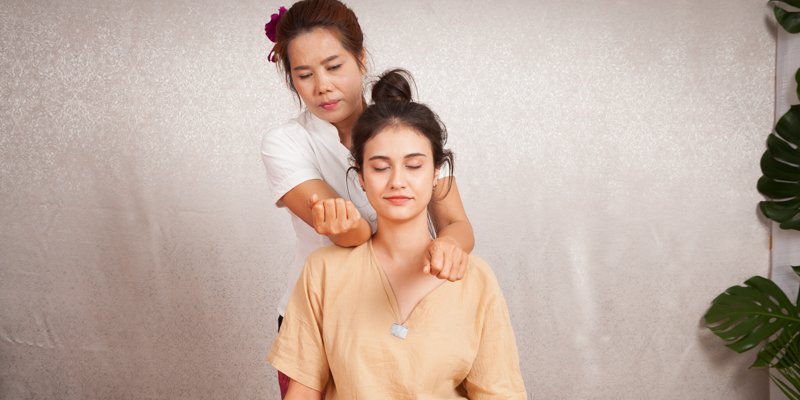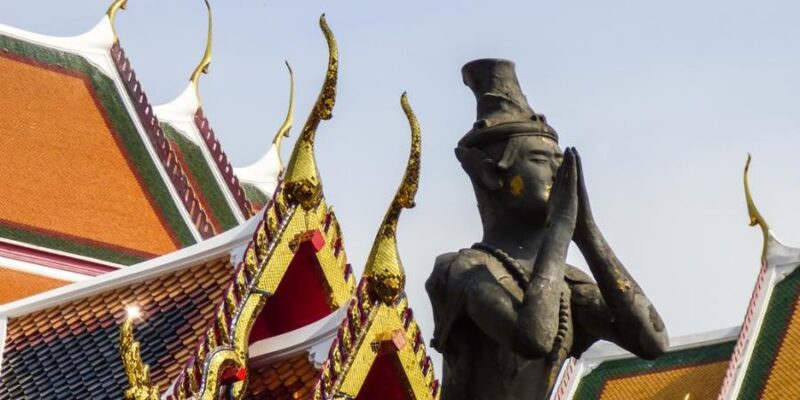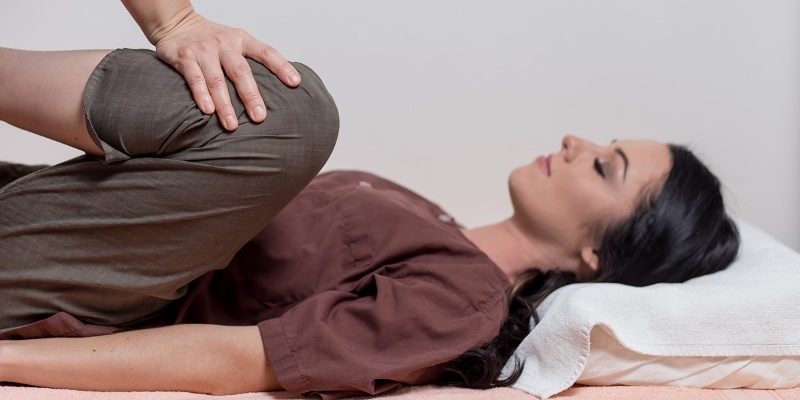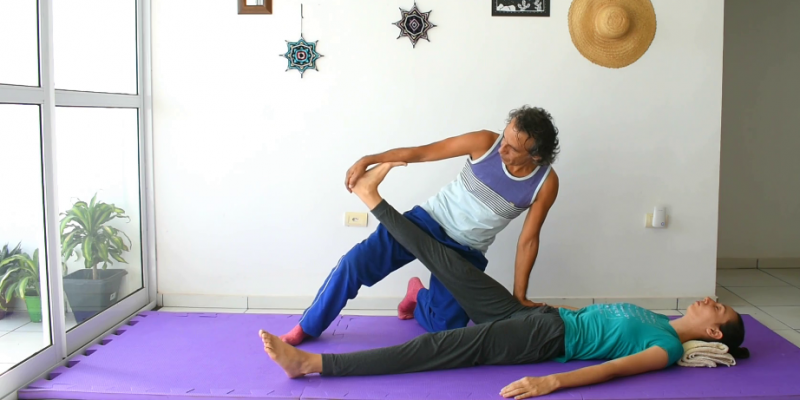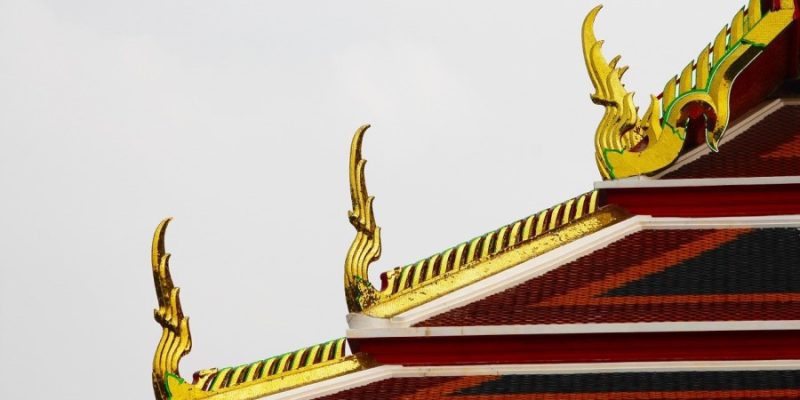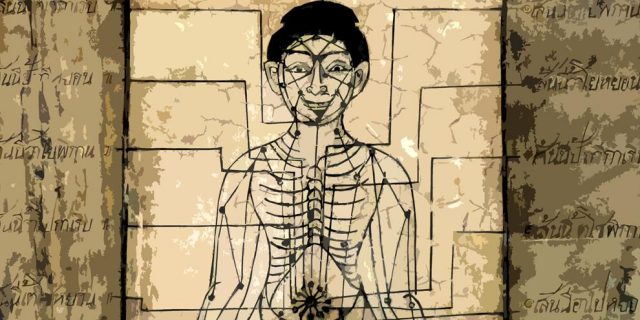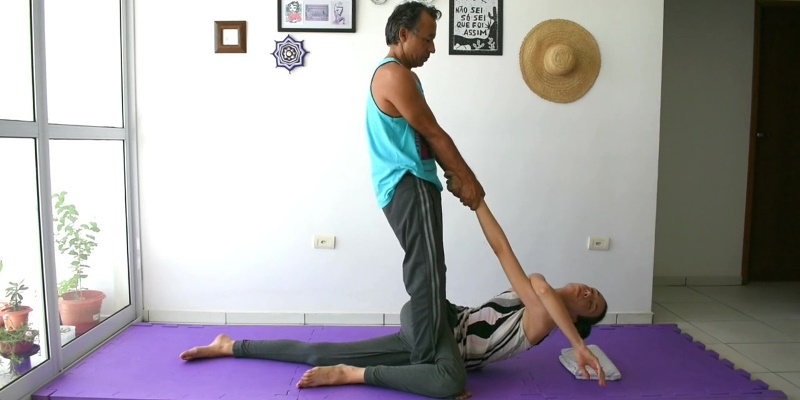
Spinal twists (or torso rotation stretches) are a well-known feature in Thai Massage and there are many ways to perform these stretches, notably in the seated, supine, and side lying position. Further below in this post, I’ve inserted a few photos to show you some of the options.
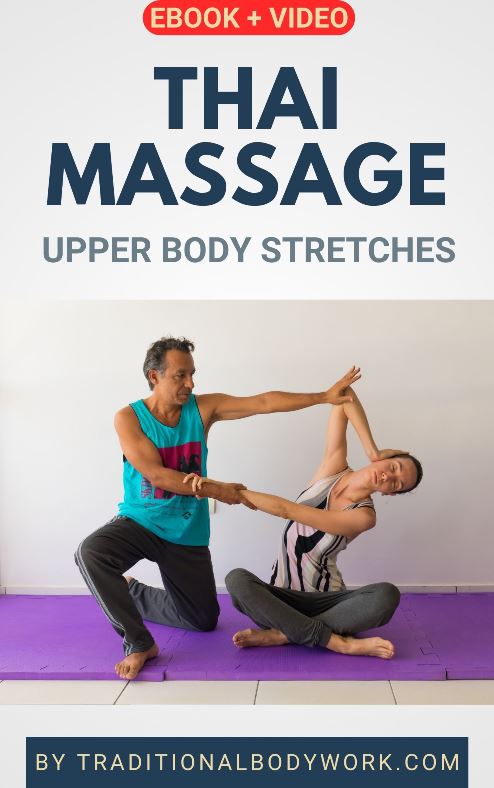
The primary muscles affected by Thai Massage torso rotation stretches are a set of abdominal muscles, being mainly the rectus abdominus (abs), the transverse abdominus, and the internal and external obliques.
The abdominal muscles support and allow movement of the torso of the body, hold organs in place, and together with the back muscles they make up what is called your “core.” They help to keep the body stable and balanced, and they protect the spine.
Nevertheless, very much depending on the way a spinal twist is performed on the receiver, a range of other muscles located in the back, shoulders and legs is affected also. Think of the rhomboids, deltoids, glutes, and quadriceps, among others.
Mind that it’s not uncommon that the spine “cracks” (a popping or clicking sound) when carrying out a spinal twist. Typically, this is simply a spontaneous readjustment of some of the spinal vertebrae, although torso rotation stretches can also be done deliberately as part of a therapeutic session. If you want to know more about Thai Massage cracking techniques, you can read our post Thai Massage Cracks | Bone and Joint Realignment.
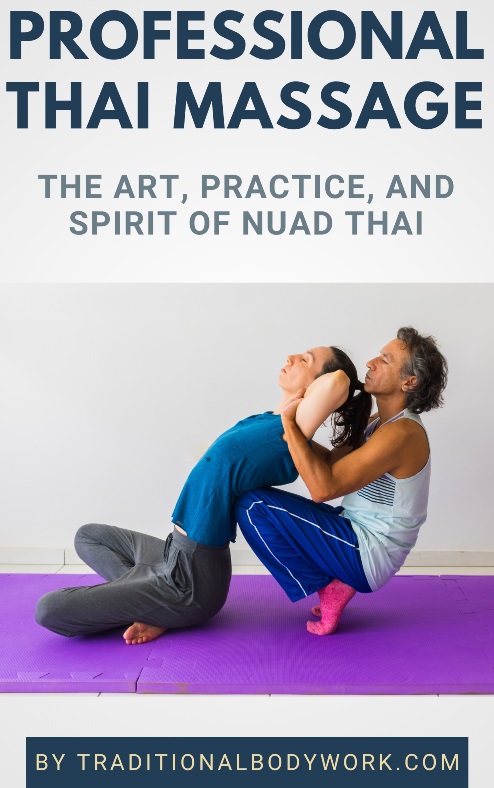
In any case, spinal twists are commonly used in treatment sessions, and considered important and very beneficial stretches in Thai Massage. They are good for the back, abdomen, and spine, and in general improve your flexibility and mobility, while promoting feelings of relief and relaxation.
Nonetheless, there are quite some precautions and contraindications to be observed, notably those that have to do with conditions of the vertebrae and spine, such as slipped disks, ruptured disks, hernias, osteoarthritis, spinal stenosis, sciatica, and spondylolisthesis, among others.
Well, below then finally some examples of Thai Massage spinal twist stretches. If you’re interested in learning more about Thai Massage stretches, specifically upper body stretches, just take a look at our Video Workshop Thai Massage – Upper Body Stretches.
